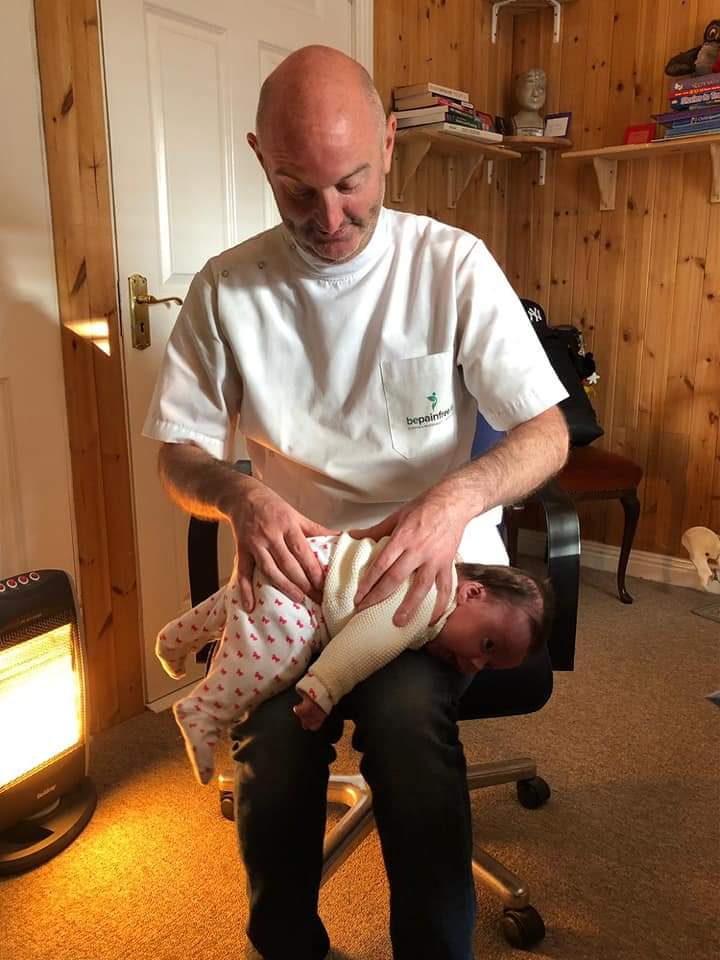Osteopathic treatment through pregnancy is a gentle and safe way of helping your body adapt to the changes which are taking place.
The safety of both mother and baby is the osteopath’s first concern. After a thorough assessment, osteopathic treatment may help to relieve the aches and pains caused by the growth in the size of the baby and the accommodation of the mother to this. Obviously, I am extremely careful, especially during the first 12 weeks of pregnancy, and if I have any concerns over the health of either mother or baby then I will refer you straight to your doctor or midwife.
Osteopathy helps to ease other side effects of pregnancy such as heartburn, indigestion, constipation, and pain in the buttock, groin or leg (commonly called sciatica). Some patients reported reduced morning sickness after osteopathic treatment.
Osteopathic treatment during pregnancy is not new. For many years, osteopaths have used their skills to help expectant mothers, employing a variety of gentle techniques to ease supporting muscles and ligaments.
Every pregnancy is ‘special’. Osteopaths focus on the mother as a person.
I have a lot of experience working with pregnant mothers and the problems they face in an office environment. I can advise on the best equipment to use, and how best to use it. I am happy to visit you at your desk to help in this regard.
Osteopathy for babies and children is a very gentle and relaxing technique which helps relieve trauma or release tension and stresses in your baby’s body and head that might have been caused during pregnancy and birth.
These are the problems that osteopathy can help your child with:
Agitation & Sleeping disorder
Torticollis, plagiocephaly, flat head
Varus foot, intoeing, pigeon toes
Abnormal rotation of the hip
Stiffness, hyperextension of the back
Difficulty with sitting position, rolling over, crawling
Reflux, regurgitation, colic, constipation, diarrhoea
Ineffective sucking or painful breastfeeding
Infections angina, nasopharyngitis, otitis,
Wheezing, bronchitis or bronchiolitis
Asthma

The first appointment always begins with a medical questionnaire. This allows me to ensure that the child can be treated by me, and won’t need to be referred back to your doctor.
In turn, I will talk about:
– How was the pregnancy and childbirth? What kind of delivery?
– Systems review: digestive, sleep, breathing, etc.
I want to see how the child interacts with me, what kind of attitude he or she adopts to see how I can approach him or her. Some children are more apprehensive than others and I must respect this apprehension.
Finally, depending on how the child reacts on that day, I will then start the treatment according to my findings and depending on how the child reacts on that day.
Yes, in the majority of cases osteopathy is very helpful in helping relieve such issues. I look at your baby on many levels including:
a) The gut – By gently palpating the gut we can sense any restrictions which maybe causing constipation or diarrhoea.
b) The breathing mechanics – Labour may cause compression of your baby’s ribs and diaphragm which can cause the tube at the top of the stomach to remain open, thus leading to reflux.
c) The head, neck and mouth – Suckling issues are usually resolved by working on the small muscles around the neck and mouth, helping your baby to latch better.
d) The baby generally – Sometimes after birth, a stressful pregnancy, or if a baby has been in a lot of pain, they may be generally tense. Osteopaths can usually feel this on palpation, and use specific techniques to calm and relax the baby.
I highly recommend all mums and babies to have a course of osteopathy two weeks post pregnancy.